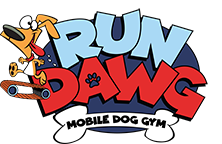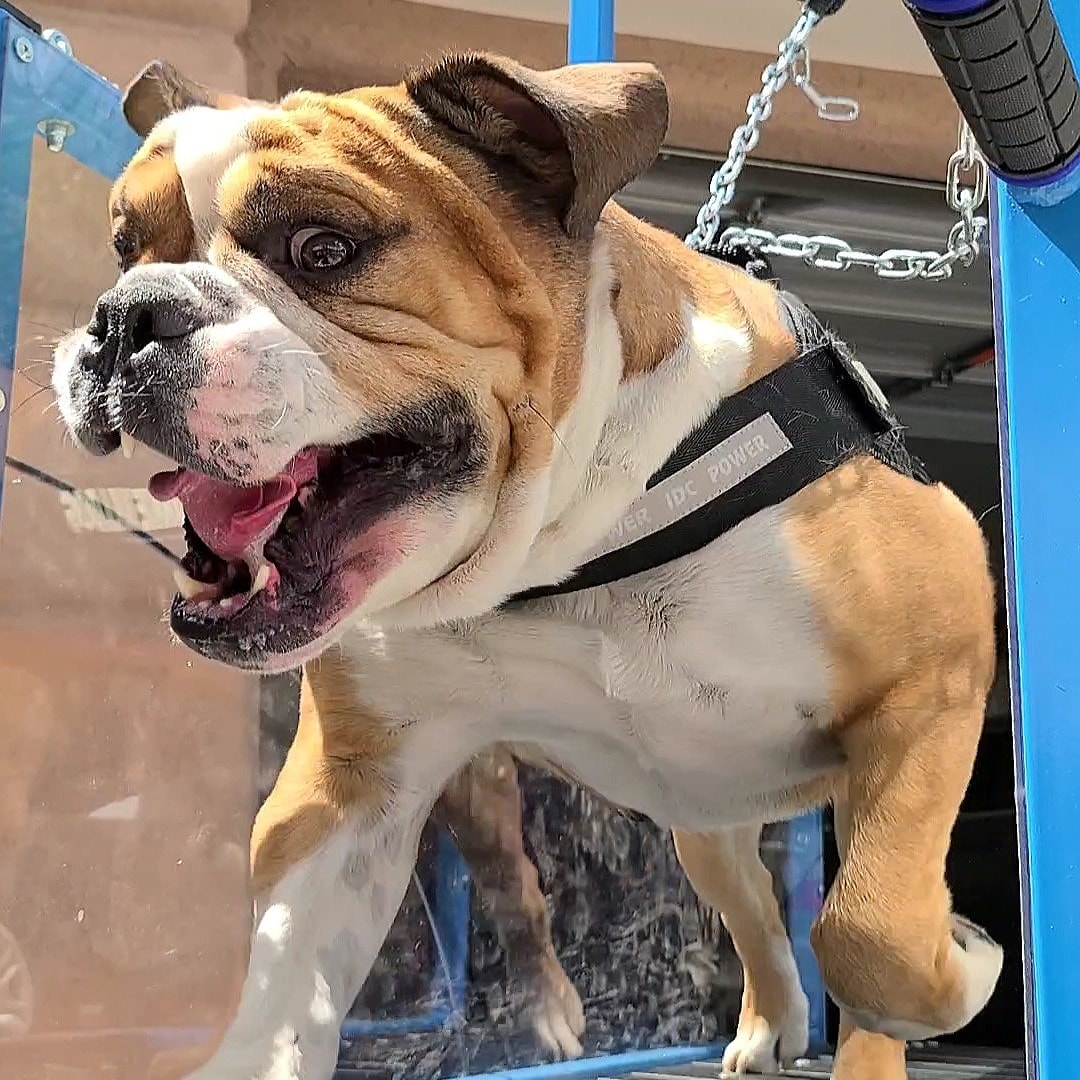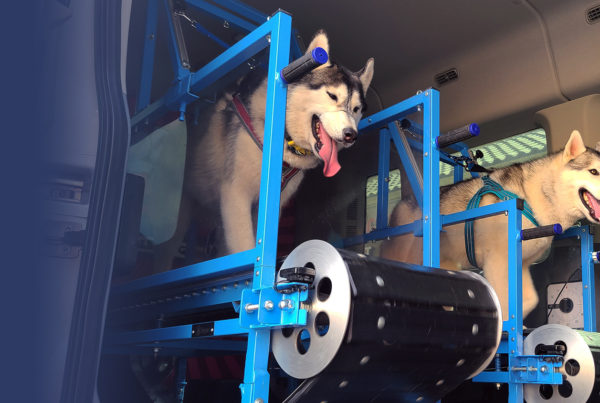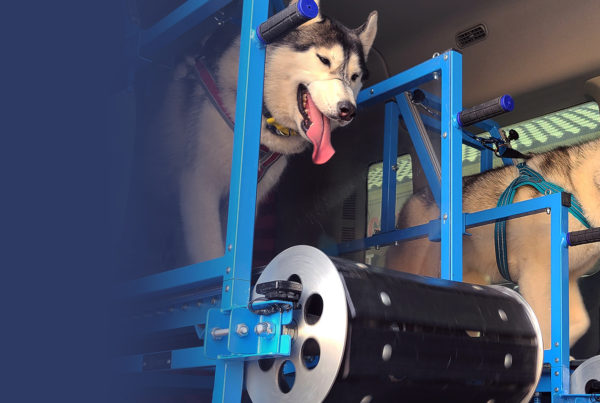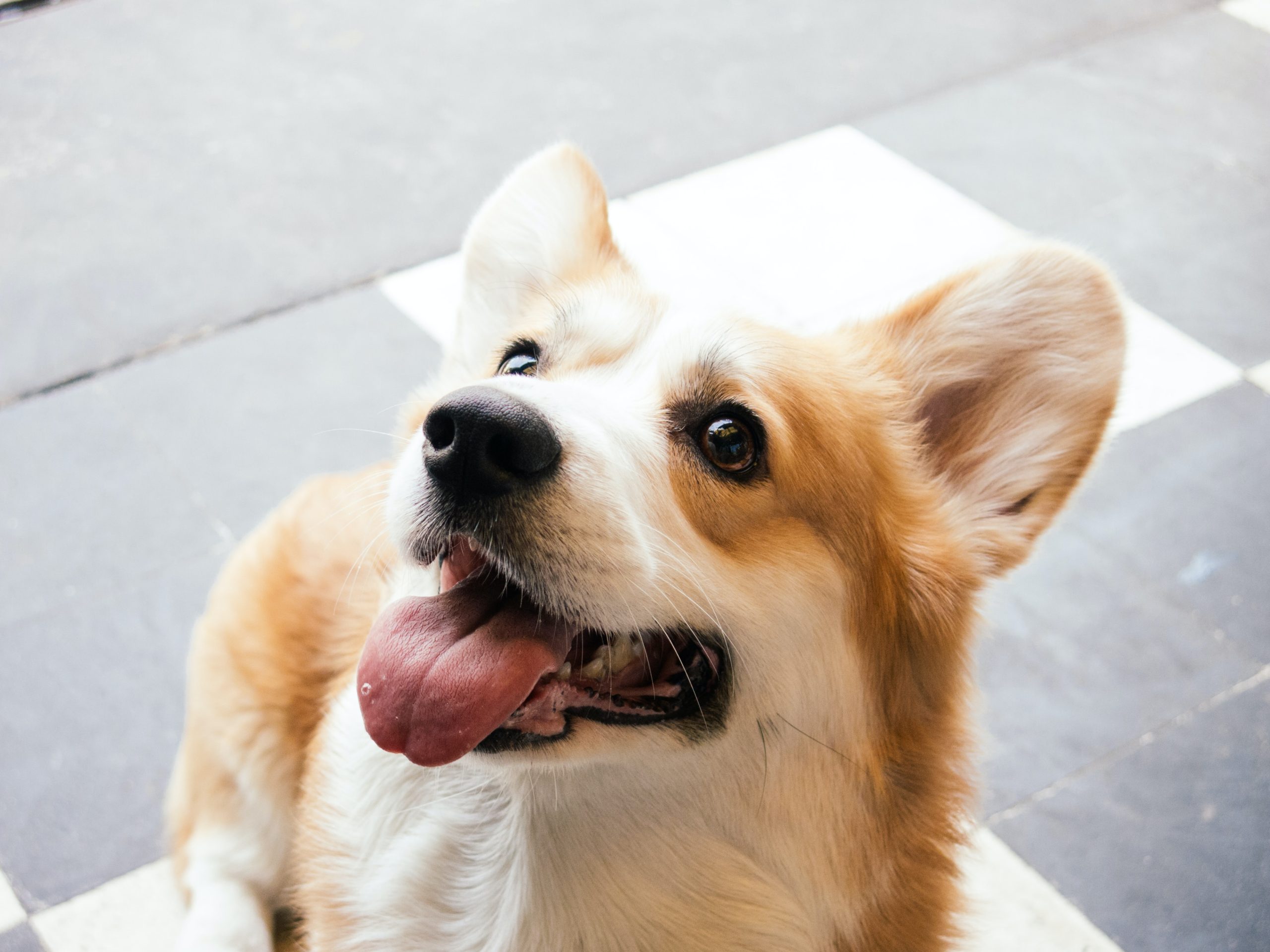All dogs are different, and because our treadmills (slatmills) are not powered by motors we are relying on the dog themselves to move forward in order to create the motion. It works very simply, the dog has a harness that is connected to the treadmill at the center. When the dog takes steps forward, the belt moves under their feet, keeping them in the same place even though they are walking or running. It takes a little bit of time for the dog to get used to this new situation, as well as being in a van and with strangers. Through positive encouragement and motivation using toys and cheering, we encourage the dog to get more comfortable until they are moving at the pace that they want.
The process will vary depending on the dog. There are a few responses that we see more than others, the two ost popular being to either lay down on the treadmill or to charge forward. Both of these responses are based on the dog being unfamiliar with the process and not knowing how to make it work, so they are usually a little bit fearful at first. If they lay down in response to the movement, our next steps will be to take as long as it tak3es to make the dog comfortable and get them to stand up and possibly take a few steps. We cannot force the dog to do anything that they do not want to do on their own or they will become more afraid of the treadmill, working against the goal of getting them comfortable. We may have to spend an entire 30 minute session just getting the dog comfortable enough to stand up, and it sometimes takes several sessions to get them to start moving. The opposite response if for the dog to begin wildly charging forward, basically running away. This is easier to work with because they are already performing the correct motion, they just have not gained the skills yet to balance themselves and move the belt under control. In this case, we will slow the belt down under their feet no matter how hard they pull, keeping them under control and allowing them to slowly get used to how it moves. These types of dogs will usually pick up the process within only a few minutes, and be running comfortably within one or two sessions. Yes, the dogs do remember the treadmills and van the next time they see it, and will usually pick up where they left off last time.
When a dog is finally used to the treadmill, they will walk or run at the pace they desire. Some dogs will want to run at a fast pace and others prefer to simply walk at a slow pace. Either way is fine and they are getting exactly the amount of exercise that they want. We can encourage a dog to move from walking to running, but if they do not want to do it then there is no way to force them to run. We prefer it this way, because the dog is allowed to enjoy their exercise instead of being forced to move at an uncomfortable pace. We have seen dogs run upwards of 40 miles per hour, and other dogs walk as slow as one mile per hour.
We do everything we can to make the process fun for the dog. If they are enjoying themselves then they will not only be more willing to exercise but will look forward to it. We always take into consideration that the dog is in an unfamiliar situation, and is going to take as long as they need to get comfortable. It is wonderful to see them learn the process over time, and begin to look forward to it. Many owners tell us that the dog gets excited when they see the van, and begin running around in the house waiting to get there! Our goal is to help the dog live a healthier life through regular exercise, adn to let them have some fun at the same time. It isn’t too bad for the owners either!
